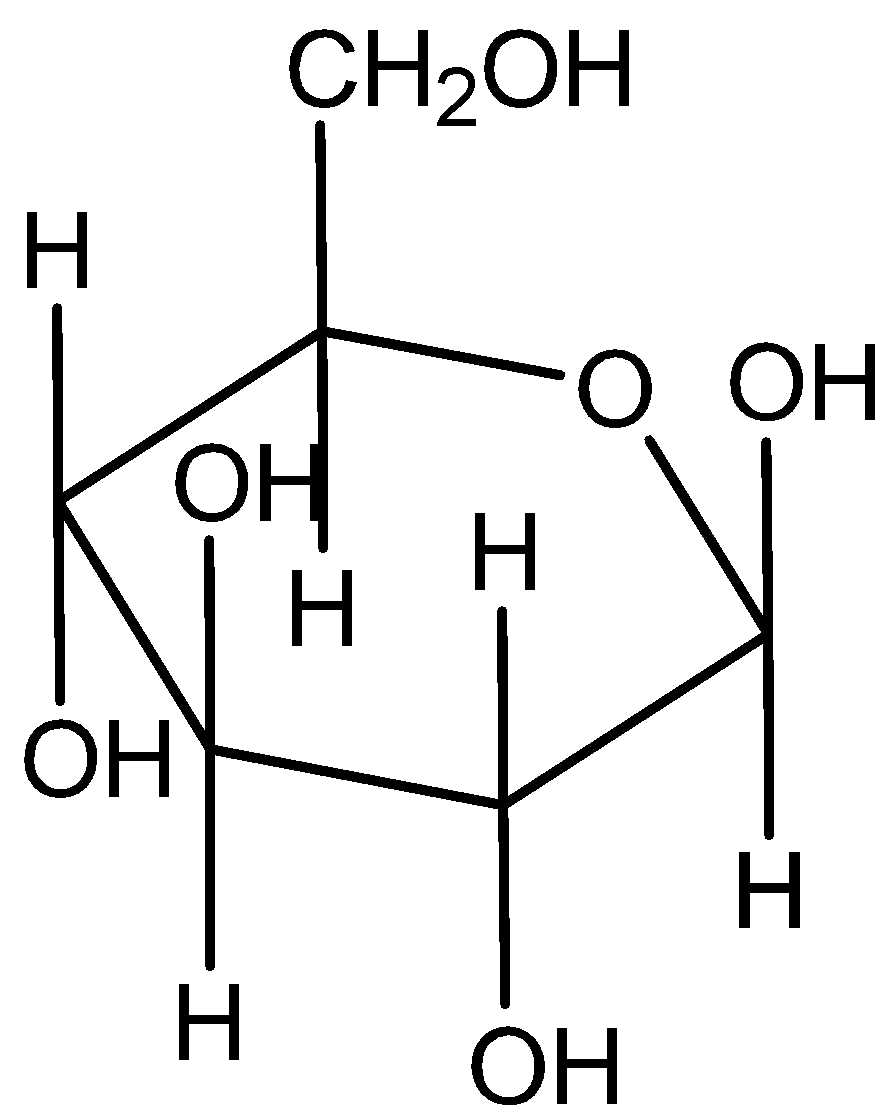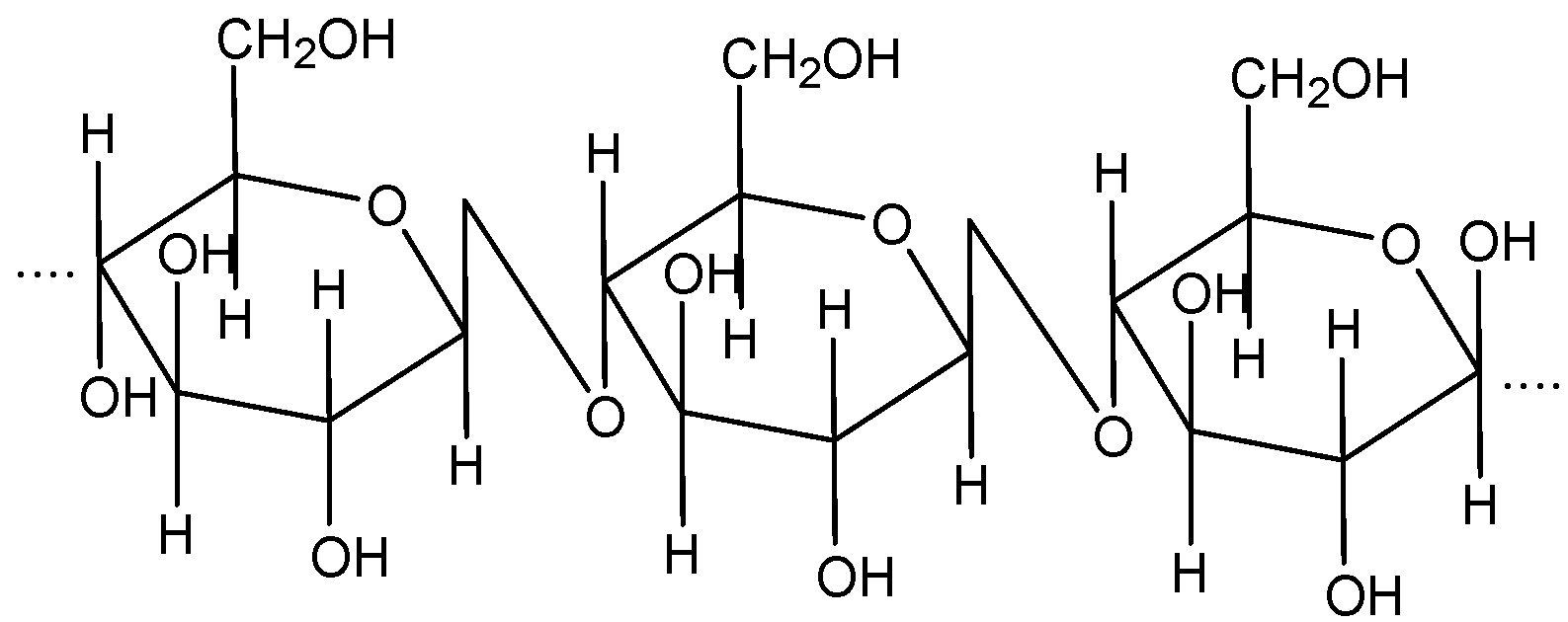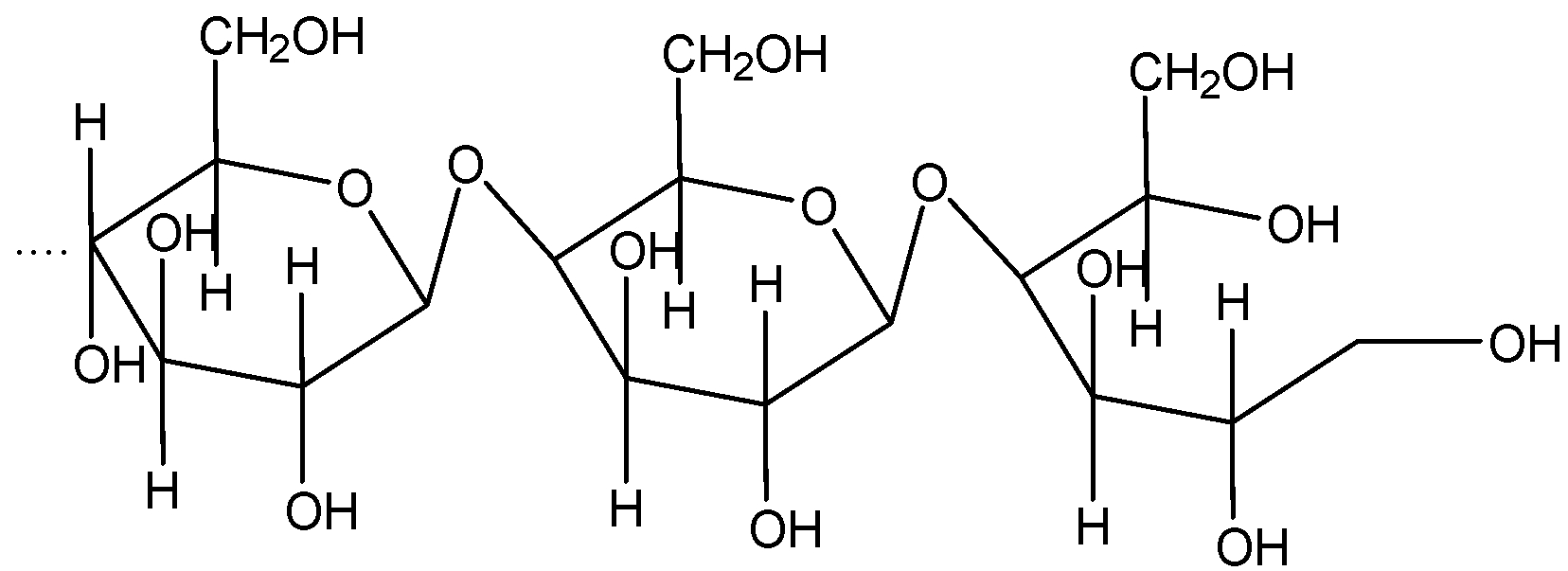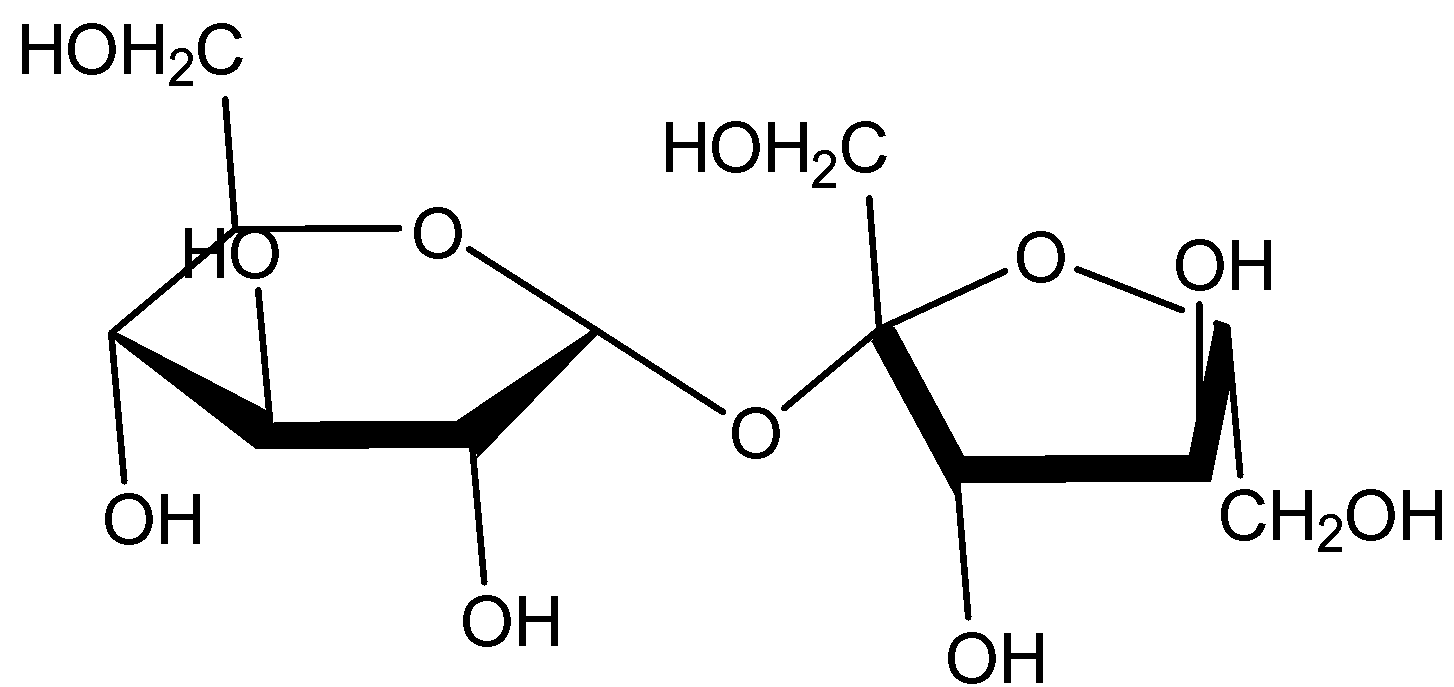
Structurally, cellulose is a linear polymer of:
A.$\beta $ -D-glucose unit
B.Sucrose molecules
C.$\alpha $ -d glucose units
D.Glucose and fructose unit
Answer
555k+ views
Hint: We know that glucose is an organic compound which has many polymers. These polymers exist to form various chemical compounds. It is a monosaccharide. Cellulose is a polymer of glucose but it is polysaccharide. It is formed with long linear chains of $\beta $ -D-glucose unit.
Complete answer:
We can draw the structure of $\beta - D - {\text{glucose}}$ is

This structure forms a long chain by replacing one hydrogen atom from the alcohol group and bonding with the adjacent oxygen atom of the other group. Thus, to form a new compound so called cellulose.

So here, we have the answer that cellulose is obtained by a long chain of $\beta - D - {\text{glucose}}$.
Now, let us know what the other structures form.
The $\alpha - D - {\text{glucose}}$ when combined to form long chains, they form starch (amylose).
The structure can be visualized as –

Sucrose is also called sugar and commonly used as sugar. It is a complex compound like cellulose and starch. It is formed by monosaccharides – glucose and fructose.
The structure can be represented as

Hence, the correct answer to the given question is A. $\beta - D - {\text{glucose}}$ units.
Note:
-We have to remember that glucose, fructose, and sucrose are called carbohydrates. There are many other carbohydrates as well like – galactose, maltose, lactose, etc. They are formed by long chain bonding of monosaccharide compounds to form disaccharide and polysaccharide compounds.
-Carbohydrates are distinguished in two different forms. One is simple, which consists of monosaccharides – glucose, fructose and galactose and disaccharides – maltose, sucrose and lactose. The other form is complex structures like – starch, glycogen and fiber.
Complete answer:
We can draw the structure of $\beta - D - {\text{glucose}}$ is

This structure forms a long chain by replacing one hydrogen atom from the alcohol group and bonding with the adjacent oxygen atom of the other group. Thus, to form a new compound so called cellulose.

So here, we have the answer that cellulose is obtained by a long chain of $\beta - D - {\text{glucose}}$.
Now, let us know what the other structures form.
The $\alpha - D - {\text{glucose}}$ when combined to form long chains, they form starch (amylose).
The structure can be visualized as –

Sucrose is also called sugar and commonly used as sugar. It is a complex compound like cellulose and starch. It is formed by monosaccharides – glucose and fructose.
The structure can be represented as

Hence, the correct answer to the given question is A. $\beta - D - {\text{glucose}}$ units.
Note:
-We have to remember that glucose, fructose, and sucrose are called carbohydrates. There are many other carbohydrates as well like – galactose, maltose, lactose, etc. They are formed by long chain bonding of monosaccharide compounds to form disaccharide and polysaccharide compounds.
-Carbohydrates are distinguished in two different forms. One is simple, which consists of monosaccharides – glucose, fructose and galactose and disaccharides – maltose, sucrose and lactose. The other form is complex structures like – starch, glycogen and fiber.
Recently Updated Pages
A man running at a speed 5 ms is viewed in the side class 12 physics CBSE

State and explain Hardy Weinbergs Principle class 12 biology CBSE

Which of the following statements is wrong a Amnion class 12 biology CBSE

Two Planoconcave lenses 1 and 2 of glass of refractive class 12 physics CBSE

The compound 2 methyl 2 butene on reaction with NaIO4 class 12 chemistry CBSE

Bacterial cell wall is made up of A Cellulose B Hemicellulose class 12 biology CBSE

Trending doubts
What are the major means of transport Explain each class 12 social science CBSE

Which are the Top 10 Largest Countries of the World?

Draw a labelled sketch of the human eye class 12 physics CBSE

Explain sex determination in humans with line diag class 12 biology CBSE

The pH of the pancreatic juice is A 64 B 86 C 120 D class 12 biology CBSE

Give 10 examples of unisexual and bisexual flowers




